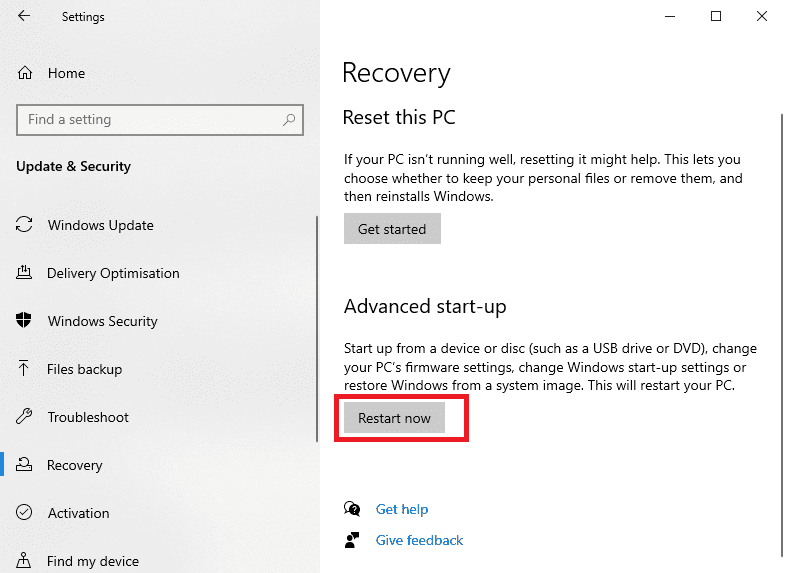Methods for Entering and Exiting Safe Mode on a Computer
Jul. 09, 2025 / Updated by Seraphina to Windows 10
During computer usage, Safe Mode serves as a special startup environment, providing users with an effective way to diagnose and repair system issues with minimal system loading items. Whether encountering system crashes, driver conflicts, malware infections, or needing to uninstall stubborn programs, Safe Mode can play a crucial role. This article will detail methods for entering and exiting Safe Mode on a computer, hoping to be helpful to everyone.

1. Functions of Computer Safe Mode:
Safe Mode is a simplified version of system startup status that only loads the most basic hardware drivers and services, blocking most third-party software and non-core system components. This streamlined startup environment helps isolate potential problem sources, making it easier for users to diagnose and resolve faults affecting normal system operation.
In Safe Mode, users can:
(1). Uninstall conflicting drivers:
When newly installed drivers cause system crashes or failure to start, Safe Mode allows the uninstallation of problematic drivers without hindrance. If uninstalling drivers regularly, "Driver Talent" can be used for quick removal without residue, making it convenient to detect and install other drivers.

(2). Remove malware:
Some malware is difficult to remove in normal mode, but in Safe Mode, due to the limited running environment of protective software, virus activity is suppressed, making it easier to remove.
(3). Restore system settings:
In case of issues caused by erroneous changes to system settings, Safe Mode allows access to system restore points or modification of the registry to restore to normal status.
(4). Repair system files:
Use System File Checker (SFC) or DISM command-line tools to repair damaged system files.
2. Methods for Entering Safe Mode on a Computer:
1). Windows 10/11 Systems:
①. Press the F8 key during system startup:
Although traditionally, entering the advanced boot menu by pressing the F8 key during startup was common, with the introduction of fast startup technology, this method is less successful in modern Windows systems. In case of emergency, try triggering it by quickly and continuously pressing F8 after the POST test during startup.
②. Forcibly restart to enter the advanced boot menu:
When the system encounters a problem and cannot start normally, press and hold the power button to force shutdown, repeat this action twice, and the system will automatically enter the "Automatic Repair" interface on the third startup. In this interface, select "Advanced options" > "Troubleshoot" > "Advanced options" > "Startup Settings," and then click "Restart". After restarting, the system will display a series of startup options, including several Safe Mode options (such as "Safe Mode", "Safe Mode with Networking", "Safe Mode with Command Prompt", etc.), press the corresponding function key (such as F4, F5, F6, etc.) to enter the corresponding Safe Mode.

③. Use the Settings menu:
In case the system can start normally, go to "Settings" > "Update & Security" > "Recovery" > "Advanced startup" > "Restart now", and the system will enter the advanced startup menu, with subsequent operations similar to method two.
④. Use the System Configuration tool (msconfig):
In the "Run" dialog (Win+R key combination), type "msconfig" to open the System Configuration utility, switch to the "Boot" tab, check "Safe boot", click "Apply", and then restart to enter Safe Mode. After fixing the problem, return here to uncheck to restore normal startup.
2). Windows 7/8/8.1 Systems:
①. Press the F8 key during system startup:
In the early stage of system startup, continuously press the F8 key until the advanced boot options menu appears, use the arrow keys to select "Safe Mode", and press Enter.

②. System Configuration tool (msconfig):
The operation steps are similar to Windows 10/11, open the System Configuration utility, select the "Boot" tab, check "Safe boot", apply, and then restart to enter Safe Mode.
3). Mac OS Systems:
①. Press Command (⌘) + R keys during restart:
Immediately press this key combination after hearing the startup sound to enter recovery mode. In the top menu bar, select "Utilities" > "Terminal", and in the terminal, enter "csrutil disable" and then restart. Enter recovery mode again, open "Utilities" > "Startup Security Utility", select "Secure Boot" to disable it, then restart the computer, press the Shift key until the login window appears, and select "Safe Mode" to log in. After resolving the issue, follow the same steps to re-enable Secure Boot.

②. Through System Preferences:
In normal mode, open "System Preferences" > "Users & Groups", unlock, select the current user, click the "Login Items" tab, uncheck problematic startup items, then restart the computer and press the Shift key to enter Safe Mode.
3. Methods for Exiting Safe Mode on a Computer:
The method for exiting Safe Mode on a computer is usually similar to entering Safe Mode, but the specific steps may vary, depending on your operating system.
Below are some common methods:
(1). Windows 10/11:
Select "Settings" from the Start menu.
Go to "Update & Security" > "Recovery".
Under "Advanced start-up", select "Restart now".

After restarting, select "Startup Windows 10/11" on the "Choose an option" screen, and then press Enter.
This will restart your computer and bring it back to normal mode.
(2). Windows 7/8/8.1:
Restart the computer.
Press the F8 key during startup until the advanced boot options menu appears.
Use the arrow keys to select "Safe Mode" and press Enter.
After logging into the computer, open the Start menu, then select "Shut down".
Choose "Restart" from the pop-up menu to exit Safe Mode.
(3). Mac OS:
Restart the computer.
During startup, hold down the "Command (⌘) + R" keys to enter recovery mode.
Select "Utilities" > "Terminal" from the top menu bar.
In the terminal, enter "csrutil enable", then press Enter.
Restart the computer again to exit Safe Mode.
These are the methods for entering and exiting Safe Mode on a computer. We hope this information is helpful. If you encounter issues with drivers such as network cards, graphics cards, Bluetooth, sound cards, you can use "Driver Talent" to detect and repair them. Additionally, Driver Talent supports driver downloads, installations, backups, and more, allowing flexible installation of drivers.
See also:
How to Open Task Manager on Computer
How to download Brother printer drivers
Twelve ways to fix no sound on computer
Computer Win key unresponsive, how to solve
Is it essential to update computer drivers

|
ExplorerMax |

|
Driver Talent for Network Card | |
| Smart and advanced file explorer tool for Windows platforms | Download & Install Network Drivers without Internet Connection | |||
| 30-day Free Trial | Free Download |







